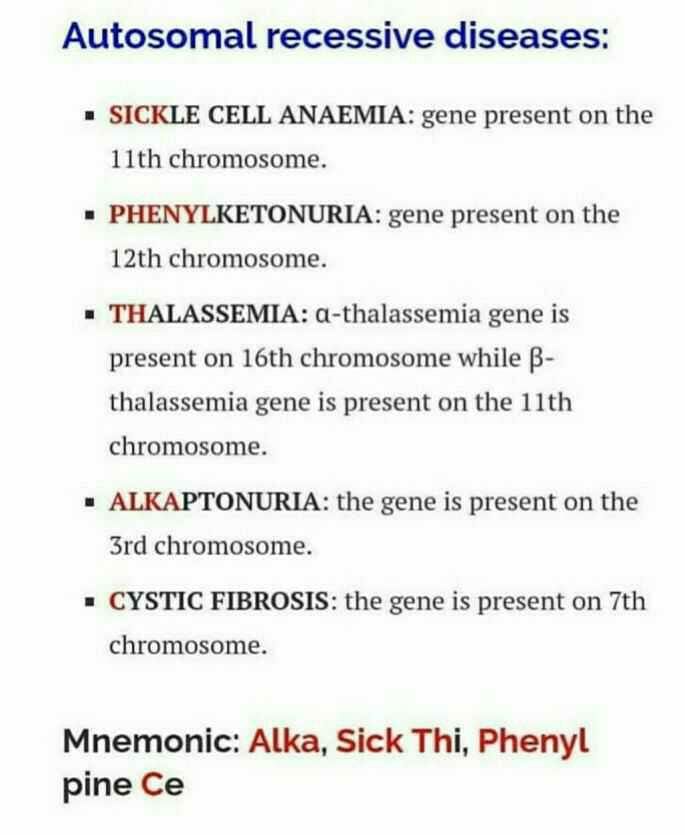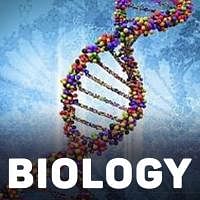NEET Exam > NEET Questions > Neet Preparation Series (Tricks for autosomal...
Start Learning for Free
Neet Preparation Series (Tricks for autosomal recessive disease).its all about to help you so don't answer plz?
Most Upvoted Answer
Neet Preparation Series (Tricks for autosomal recessive disease).its a...

Community Answer
Neet Preparation Series (Tricks for autosomal recessive disease).its a...
Tricks for Autosomal Recessive Diseases
Autosomal recessive diseases are genetic disorders that occur when an individual inherits two copies of a faulty gene, one from each parent. These diseases are characterized by the need for both copies of the gene to be mutated in order for the disease to manifest. Here are some tricks to help you understand autosomal recessive diseases for your NEET preparation:
1. Understanding Autosomal Recessive Inheritance
- Autosomal recessive diseases are inherited in an autosomal recessive manner, meaning the gene responsible for the disease is located on one of the autosomal chromosomes (not the sex chromosomes).
- Both parents of an affected individual are usually carriers of the disease gene, meaning they have one normal copy and one mutated copy of the gene.
- The chance of two carrier parents having an affected child is 25% in each pregnancy.
2. Punnett Square
- Use a Punnett square to visualize the inheritance of autosomal recessive diseases. This square helps predict the probability of having an affected child based on the genotype of the parents.
- Place the genotypes of the parents (both carriers) on the top and side of the square, and fill in the boxes with possible combinations of alleles.
- The square will show the probabilities of having unaffected carriers, unaffected non-carriers, and affected individuals.
3. Consanguinity
- Autosomal recessive diseases are more common in populations with a high degree of consanguinity, where individuals are more likely to share a common ancestor.
- Consanguineous mating increases the chances of both parents carrying the same mutated gene, resulting in a higher risk of having affected children.
4. Genetic Testing
- Genetic testing can be used to identify carriers of autosomal recessive diseases.
- Genetic counseling is recommended for carrier couples, as it helps them understand the risks associated with having affected children and explore options such as prenatal diagnosis or preimplantation genetic testing.
5. Examples of Autosomal Recessive Diseases
- Some examples of autosomal recessive diseases include cystic fibrosis, sickle cell anemia, Tay-Sachs disease, and phenylketonuria.
- Understanding the clinical features, molecular basis, and diagnostic tests for these diseases will help you in your NEET preparation.
In conclusion, understanding the inheritance patterns, using Punnett squares, recognizing the impact of consanguinity, and being aware of genetic testing are important tricks to help you grasp the concept of autosomal recessive diseases. Remember to study specific examples to deepen your understanding. Good luck with your NEET preparation!
Autosomal recessive diseases are genetic disorders that occur when an individual inherits two copies of a faulty gene, one from each parent. These diseases are characterized by the need for both copies of the gene to be mutated in order for the disease to manifest. Here are some tricks to help you understand autosomal recessive diseases for your NEET preparation:
1. Understanding Autosomal Recessive Inheritance
- Autosomal recessive diseases are inherited in an autosomal recessive manner, meaning the gene responsible for the disease is located on one of the autosomal chromosomes (not the sex chromosomes).
- Both parents of an affected individual are usually carriers of the disease gene, meaning they have one normal copy and one mutated copy of the gene.
- The chance of two carrier parents having an affected child is 25% in each pregnancy.
2. Punnett Square
- Use a Punnett square to visualize the inheritance of autosomal recessive diseases. This square helps predict the probability of having an affected child based on the genotype of the parents.
- Place the genotypes of the parents (both carriers) on the top and side of the square, and fill in the boxes with possible combinations of alleles.
- The square will show the probabilities of having unaffected carriers, unaffected non-carriers, and affected individuals.
3. Consanguinity
- Autosomal recessive diseases are more common in populations with a high degree of consanguinity, where individuals are more likely to share a common ancestor.
- Consanguineous mating increases the chances of both parents carrying the same mutated gene, resulting in a higher risk of having affected children.
4. Genetic Testing
- Genetic testing can be used to identify carriers of autosomal recessive diseases.
- Genetic counseling is recommended for carrier couples, as it helps them understand the risks associated with having affected children and explore options such as prenatal diagnosis or preimplantation genetic testing.
5. Examples of Autosomal Recessive Diseases
- Some examples of autosomal recessive diseases include cystic fibrosis, sickle cell anemia, Tay-Sachs disease, and phenylketonuria.
- Understanding the clinical features, molecular basis, and diagnostic tests for these diseases will help you in your NEET preparation.
In conclusion, understanding the inheritance patterns, using Punnett squares, recognizing the impact of consanguinity, and being aware of genetic testing are important tricks to help you grasp the concept of autosomal recessive diseases. Remember to study specific examples to deepen your understanding. Good luck with your NEET preparation!
Attention NEET Students!
To make sure you are not studying endlessly, EduRev has designed NEET study material, with Structured Courses, Videos, & Test Series. Plus get personalized analysis, doubt solving and improvement plans to achieve a great score in NEET.

|
Explore Courses for NEET exam
|

|
Similar NEET Doubts
Neet Preparation Series (Tricks for autosomal recessive disease).its all about to help you so don't answer plz?
Question Description
Neet Preparation Series (Tricks for autosomal recessive disease).its all about to help you so don't answer plz? for NEET 2024 is part of NEET preparation. The Question and answers have been prepared according to the NEET exam syllabus. Information about Neet Preparation Series (Tricks for autosomal recessive disease).its all about to help you so don't answer plz? covers all topics & solutions for NEET 2024 Exam. Find important definitions, questions, meanings, examples, exercises and tests below for Neet Preparation Series (Tricks for autosomal recessive disease).its all about to help you so don't answer plz?.
Neet Preparation Series (Tricks for autosomal recessive disease).its all about to help you so don't answer plz? for NEET 2024 is part of NEET preparation. The Question and answers have been prepared according to the NEET exam syllabus. Information about Neet Preparation Series (Tricks for autosomal recessive disease).its all about to help you so don't answer plz? covers all topics & solutions for NEET 2024 Exam. Find important definitions, questions, meanings, examples, exercises and tests below for Neet Preparation Series (Tricks for autosomal recessive disease).its all about to help you so don't answer plz?.
Solutions for Neet Preparation Series (Tricks for autosomal recessive disease).its all about to help you so don't answer plz? in English & in Hindi are available as part of our courses for NEET.
Download more important topics, notes, lectures and mock test series for NEET Exam by signing up for free.
Here you can find the meaning of Neet Preparation Series (Tricks for autosomal recessive disease).its all about to help you so don't answer plz? defined & explained in the simplest way possible. Besides giving the explanation of
Neet Preparation Series (Tricks for autosomal recessive disease).its all about to help you so don't answer plz?, a detailed solution for Neet Preparation Series (Tricks for autosomal recessive disease).its all about to help you so don't answer plz? has been provided alongside types of Neet Preparation Series (Tricks for autosomal recessive disease).its all about to help you so don't answer plz? theory, EduRev gives you an
ample number of questions to practice Neet Preparation Series (Tricks for autosomal recessive disease).its all about to help you so don't answer plz? tests, examples and also practice NEET tests.

|
Explore Courses for NEET exam
|

|
Suggested Free Tests
Signup for Free!
Signup to see your scores go up within 7 days! Learn & Practice with 1000+ FREE Notes, Videos & Tests.

























